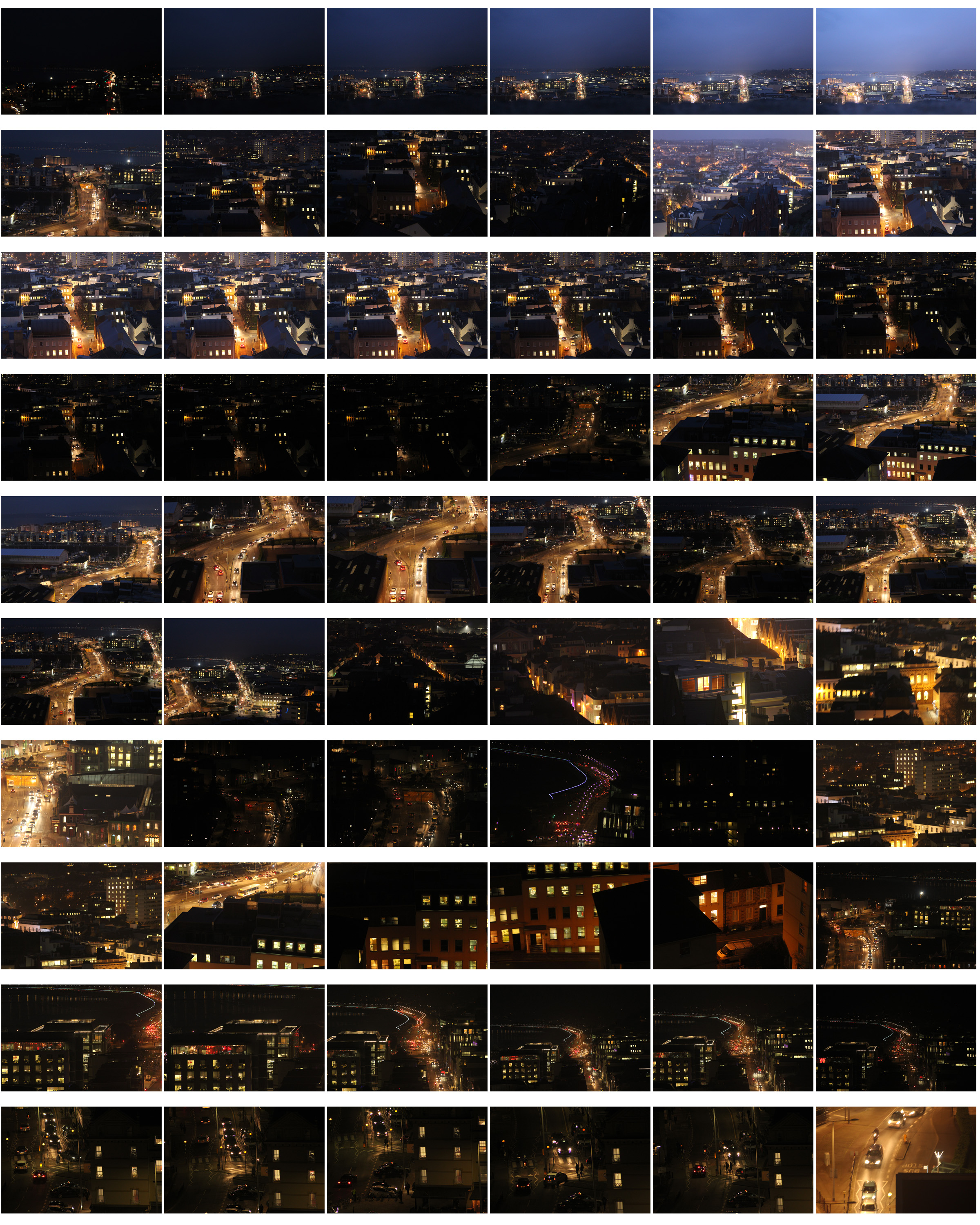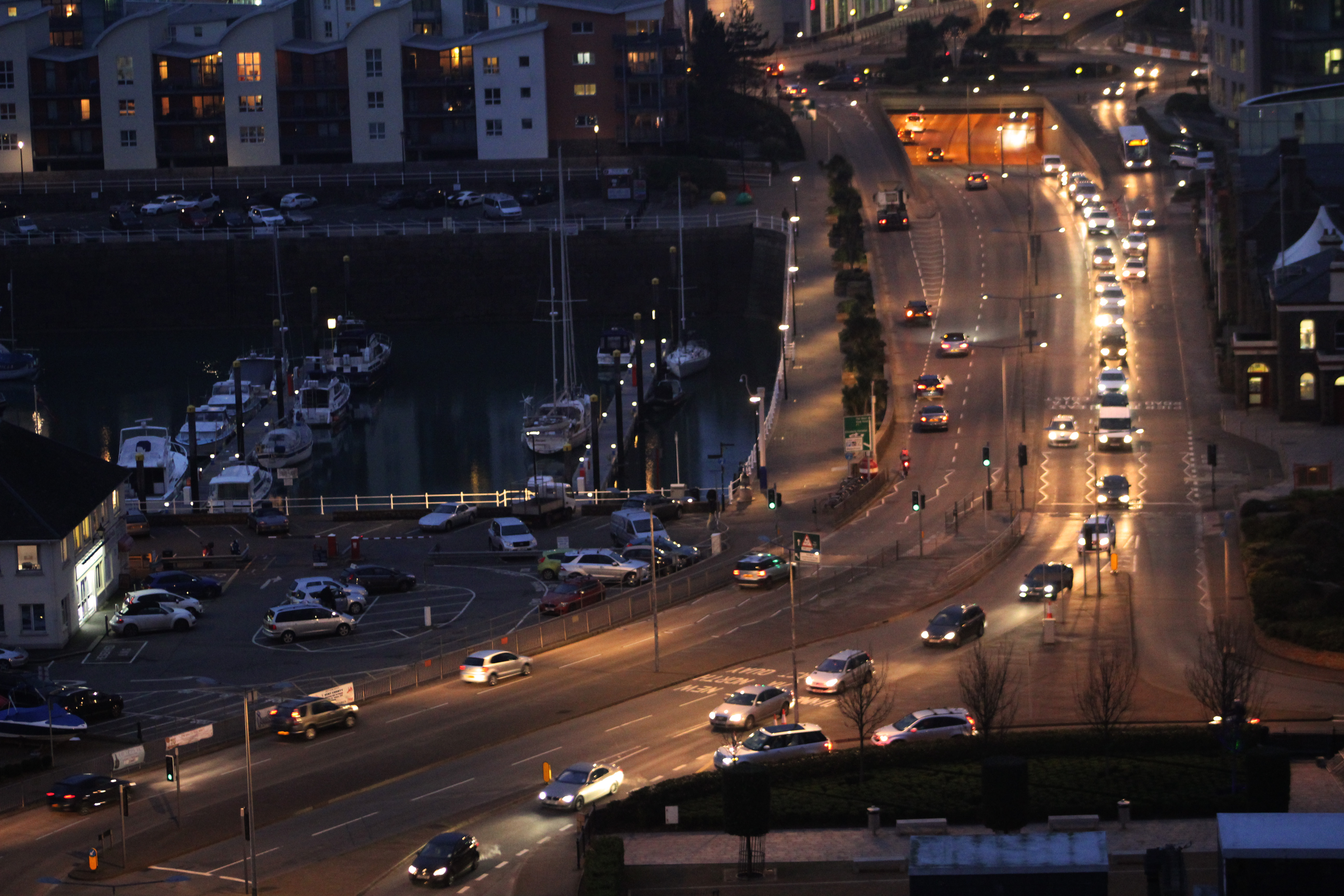Night Photography
Night photography refers to photographs taken outdoors between dusk and dawn. Night photographers generally have a choice between using artificial light and using a long exposure, exposing the scene for seconds, minutes, and even hours in order to give the film or digital sensor enough time to capture a usable image. With the progress of high-speed films, higher-sensitivity digital image sensors, wide-aperture lenses, and the ever-greater power of urban lights, night photography is increasingly possible using available light.
The following techniques and equipment are generally used in night photography.
- A tripod is usually necessary due to the long exposure times. Alternatively, the camera may be placed on a steady, flat object e.g. a table or chair, low wall, window sill, etc.
- A shutter release cable or self timer is almost always used to prevent camera shake when the shutter is released.
- A camera lens with a wide aperture, preferably one with aspherical elements that can minimize coma
 For my urban landscapes homework I decided do my photo shoot from a higher perspective taking inspiration from Nicholas Nixon and photographed buildings, with architectural views. I also took inspiration from Thomas Struth’s photos of industrialised cities and how he incorporated people and movement, presenting images of chaotic urban activity in some images, which is why I captured the movement and business of the cars. I decided to take my images as the sky was turning dark as I thought it would make the lights from the cars and buildings stand out more than if i took them in the day. In my first contact sheet the images have a blue tint where the the sun has not completely gone down, whereas my second contact sheet the sky in completely black by the end, showing the differences the light has on the images.
For my urban landscapes homework I decided do my photo shoot from a higher perspective taking inspiration from Nicholas Nixon and photographed buildings, with architectural views. I also took inspiration from Thomas Struth’s photos of industrialised cities and how he incorporated people and movement, presenting images of chaotic urban activity in some images, which is why I captured the movement and business of the cars. I decided to take my images as the sky was turning dark as I thought it would make the lights from the cars and buildings stand out more than if i took them in the day. In my first contact sheet the images have a blue tint where the the sun has not completely gone down, whereas my second contact sheet the sky in completely black by the end, showing the differences the light has on the images.  In my second contact sheet the lights from the buildings and cars are much more bright and noticeable as the yellow/orange is contrasted with the black background , making it more clear that it is night time. I think these photos are more effective as the lights from the cars make the whole road light up, making it glow and stand out more.
In my second contact sheet the lights from the buildings and cars are much more bright and noticeable as the yellow/orange is contrasted with the black background , making it more clear that it is night time. I think these photos are more effective as the lights from the cars make the whole road light up, making it glow and stand out more.
I first tried editing my first image in black and white which makes the roads seem more dark and atmospheric with the street lights and windows contrasting from the dark roofs. It shows clearly where the road leads from where the streets lights up even though you cant see the street.


I compared my photograph in black & white and in colour and decided that i preferred the image in colour because of the how the yellow/orange lights contrast with the black roofs and buildings more than they do than in black and white. Also how the road is emphasised more as it is illuminated from the light which is soft and isn’t too intense.
“Most photographers struggle with one thing in particular. That is how to make their photos stand out from the crowd. You’ll be surprised at how many locations that appear rather mundane during the day can be made to look incredibly dramatic at night. In cities, for example, you will find well-lit facades, bridges, skylines, etc. The city lights add interest and a dramatic effect giving you lots to work with.”

I also chose this image as it shows the business of a road filled with movement, presenting an image of chaotic urban activity, similar to Thomas Struth. The city that Struth presents is unregimented: there is little architectural unity, this is what i tried to interpret. I tried to show energy and speed within the image which I think I achieved from the blurring of the cars and lights by slowing the shutter speed slightly. I increased the exposure when taking the photo so all sections in the image are visible, still keeping the cars and the road the main focus of the image.

I chose this image as it is different from my other images but still overlooks chaotic urban activity but scaled down by using a long lens to focus in on a specific street. The headlights of the car highlight the people crossing the road not too intensely so the overall image is softer than it would be in daylight. The corners of the image are black where the buildings are and gradually towards the center of the image is where the main focus of the image is.
